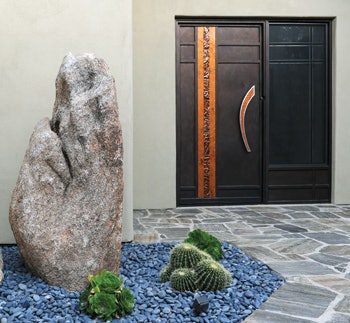
Over my many years covering all things aquatic, I’ve always tried to usher into print profiles of outstanding projects. I have no set criteria for what gets into print and what doesn’t & the work I’ve favored has simply caught my eye for being unusual, exceptionally beautiful, technically challenging, complex or otherwise groundbreaking in some way.
Unsurprisingly, many of these works have been what many people would classify as “high end.” It’s true that a large percentage, but not all by any means, of the most creative designs come with a high price tag, and many of the must progressive ideas are germinated for customers with generous budgets who want something unique.
One of the most common critiques I’ve fielded over the years has been that these projects focus on extravagant pools at the expense of the rest of the market — that the majority of people in our industry never have the opportunity to create projects with price tags in the seven or even six figures.
At first blush, that might seem a valid concern. After all, it is true that most people in our industry work primarily for middle class clientele. However, many of the design details used in grand works and high-end projects are transferrable to the mainstream.
More to the point, outstanding design is not the sole province of the high-end builder. In fact, thinking that way leads to spectrums of missed opportunities.
Here’s why. Fact is, almost anything can be designed well. With the right mixture of sensitivity, inventiveness and design background, designers across the spectrum have every opportunity to make the most of the situation at hand.
Consider something as basic as a small rectangular pool. If installed in the middle of the yard with standard white plaster, bullnose coping and blue waterline tile, surrounded by a simple band of deck, that pool may indeed qualify as a “plain Jane.” (And it is important to note that such a vessel may well be a major point of pride for the homeowner and serve as a venue for decades of fun and enjoyment.)
If you were to take that same pool, move it to one side of the yard to create more garden space, perhaps located on some type of view from inside the house, use a dark-colored surface to generate more reflections and give the water a more pond-like appearance, surround it with a less typical coping treatment, a creative deck treatment and tasteful plantings & all of a sudden an average pool can become a genuine work of art.
Best of all, the difference in price may be very small, if anything. And all the builder really did is make more sophisticated design decisions.
The same sorts of adjustments can be made with simple fountains, ponds or waterfalls. With the right placement, such elements can become destinations within the garden and add the sound of moving water to the space, enriching the sense of tranquility in the property and/or inviting the home’s inhabitants and guests to venture outside.
In every kind of property, big or small, modest or ornate, we see the creative use of decks, pathways, stairs, shade structures, statuary, outdoor dining areas, fire features and landscaping. It’s not so much the resources at hand, but how those resources are applied that spells the difference between mediocrity and excellence.
There are two recent posts to this website that fuel this kind of creative thinking by offering ideas that can be easily repurposed across a range of project types. In “Fit for Fun” by Chicago-land designer/builder Dan Lenz, we see an elaborate backyard organized around a highly customized vinyl-liner pool. The space includes a range of features that together form a comprehensive and expensive program. Yet, taken separately, any of the project’s features — from the splash pad to the custom shape, masonry details, materials selection, lighting, play structure or color palette — can be transplanted into settings far more modest in scope.
Another feature, “Peripheral Pursuits,” focuses on creative gate and fence treatments, an area of work that is often completely ignored. Some of the examples are for extremely wealthy clients, while others are more mainstream, but no less creative.
In that story, author Roger Soares points out that in many situations you can take something as utilitarian as a gate or a fence and give it an artistic twist in order to generate a whole new level of beauty and interest — and do it with little or no added cost.
The bottom line: Creativity is a matter of thinking differently, a product of imagination, a commitment to learning and the courage to suggest alternatives to clients. It is not purely a function of price.
It’s always useful to keep in mind that many clients don’t fully understand the range of options they have at hand. It’s up to the professional to point out the ways that clients’ monies can be used to the greatest effect. Or how with just a marginal level of added cost, something relatively ordinary can be morphed into an object of beauty and fascination.
Comments or thoughts on this article? Please e-mail [email protected].












































